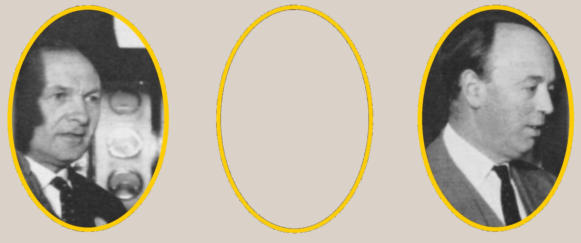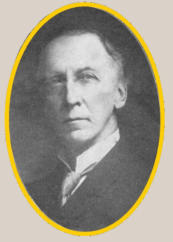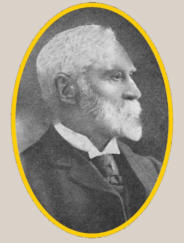The Hon Peter E.
Brassey D.L, J.P.
Director of the
Company 1954 - 1970.
Mr. Percy Harford.
Director of the
Company
1947 - 1954.
Mr. Peter Francis
F.C.C.S.
General Manager
1946 - 1970.



Mr. W. W. Pryke.
Secretary/General
Manager
1942 - 1946.
Mr. Henry L.
Brassey.
Director of the
Company 1941 - 1947.
Created Lord Brassey
of Apethorpe, 1938.
Mr. F. A. Francis
J.P.
General Manager
1929 - 1942.
Later Deputy
Chairman.
Mr. Frederick W.
Bucke.
Secretary/General
Manager
1929.

Mr. Edward C.
Bilham,
M.Inst.W.E.
Engineer responsible
for the design and
construction of the
Langford River
Works.
Mr. Walter S.
Nicholson,
M.Inst.C.E.
Engineer responsible
for the design and
construction of the
Langford River
Works.
Mr. Thomas E.
Hawksley,
Assoc.M.Inst.C.E.
Engineer responsible
for the design and
construction of the
Langford River
Works.
Dr. J. C. Thresh,
M.D., D.Sc., F.I.C.,
Etc.
An authority in the
1920s on the
chemistry and
bacteriology of the
supply of drinking
water. He was
appointed by the
Southend Waterworks
company in 1927 to
work at the
experimental
laboratory plant at
Langford. Later he
worked on setting up
the treatment plant of
Sanford Mill
waterworks for
Chelmsford borough.

Mr. Harold W.
Kolle.
Assoc.M.Inst.C.E.
Mr. Joseph Francis
O.B.E.,
J.P.
Chairman of Directors
1919 - 1941.
Joseph Francis came
to Southend in 1893
and was much
involved in the civic
life of the town.
Twice Mayor and
alderman and justice
of the peace, he
became the first
freeman of the
borough in 1918.
Mr. William
Gregson.
Solicitor to the
Company from 1878.
Mr. Henry G.
Drury, M,V,O.
A Director of the
Company.



Mr. C. S. Bilham.
Secretary and
Manager.
Worked as a lad for
the Company, under
Mr. John Ayris 1871.
Appointed
Superintendent,
having local charge of
the Water Supply and
Works, 1886.
Appointed Manager
upon the retirement
of Mr. John Ayris
1900. Appointed
Secretary and
Manager in 1905,
retired in 1929.
Mr. Charles
Hawksley.
Past President of the
Institution of Civil
Engineers, etc. Is
consulting Engineer
and designer of the
Company’s Works. He
succeeded his Father,
the late Mr. Thomas
Hawksley in 1893.
Mr. Thomas
Hawksley, F.R.S.
Past President of the
Institution of Civil
Engineers, etc. First
consulting Engineer
of the Company. He
designed and was
responsible for the
construction of many
of the largest Water
Works of the United
Kingdom, and advised
on Water Works in all
parts of the World.
An Expert Witness of
great eminence before
Parliamentary
Committees.
Mr. C. G. May.
Appointed a Director
in 1900; by 1912
Deputy Chairman.

Mr. J. Maitland
Marshall.
Succeeded his Father
the late Mr. John
Marshall, in the year
1910. By 1929 Deputy
Chairman.
Mr. Arthur March
Tapp.
One of the three
original Directors
from 1888. Became
Deputy Chairman.
Retired 1912 through
advanced age and ill
health. He rendered
the Company very
great aid during his
long connection
therewith.
Mr. Henry L. C.
Brassey, M.P.
Chairman of the
Directors.
Succeeded his Father,
the late Mr. H. A.
Brassey, in 1891 and
was Chairman until
1919.
Mr. Edward M.
Eaton, M.Inst. C.
E., F. G. S, etc.
Managing Director
and Expert Adviser of
the Company, who
succeeded the late
Mr. John Ayris upon
his retirement in
1900.

Mr. John Marshall.
A valued Director,
who rendered the
Company
considerable service.
Mr. John Ayris,
M. Inst. C. E.
First Managing
Director of the
Company. An eminent
authority on the
constant water supply
and the management
of Water
Undertakings.
Associated with Mr.
Thomas Brassey in
founding the
Company in 1865, and
afterwards by his
arduous labours and
skill ensured its
success. Retired
through ill health in
1900.
Mr. Henry Arthur
Brassey.
Second Son of the
Founder of the
Company. He became
the first Chairman of
the Directors from
1879 - 1891; invested
capital largely to
extend the Works, to
make the undertaking
a success, and took
great interest in the
progress of Southend
and Westcliff.
Mr. Thomas
Brassey.
Founder of the
Company.
World-renowned
constructor of
Railway and other
Public Works.
A great philanthropic
Captain of Industry.

Southend Waterworks Company
Directors and Others 1865 - 1970
The History of the Southend Waterworks Company
Next
to
Oxygen
water
is
the
most
vital
substance
essential
to
life,
it
is
most
crucial
to
life
forms
on
this
and
every
other
planet.
Water
is
a
chemical
composition
of
Oxygen
and
Hydrogen.
There
are
1.4B
km3
locked
in
our
planet.
We
all
take
clean
water
for
granted
its
a
part
of
every
day
life
never
a
thought
where
it
comes
from
or
how
its
made
the
journey
to
our
tap.
The
water
supply
to
Southend
and
surrounding areas did not just happen by chance but evolved through careful planning and expert engineering.
In
the
early
days
up
to
the
1800s
water
was
gathered
from
wells,
ponds
and
brooks
which
often
became
contaminated.
It
was
reported that there were numerous outbreaks of Typhoid and other water born diseases.
In
1865
the
first
water
facility
to
supply
Southend
was
built
by
the
firm
of
Thomas
Brassey
a
private
company
who
had
previously
built
the
railway
from
London
to
Southend
in
1856.
A
well/borehole,
pumping
station
in
Milton
Rd,
a
reservoir
and
later
a
water
tower in Scratton Rd/Cambridge Road supplied water to the area known as Cliff Town in central Southend.
In
1871
the
Southend
Waterworks
Company
became
a
limited
company.
In
1879
the
company
took
on
to
supply
the
nearby
surrounding
areas
and
in
1894
included
Thundersley
1907
the
Billericay
Rural
District
Council
and
the
Leigh
Urban
District
Council
were
purchased.
By
1924
the
company
had
expanded
and
now
supplied
water
to
Rochford
and
the
Parishes
of
Buttsbury
and
Fobbing
with
further
supply
to
Langdon
Hills
in
1959
and
Shoeburyness
in
1960.
In
early
1919
there
was
a
serious
water
shortage.
In
September
1919
the
first
of
many
meetings
was
held
at
the
Kursaal
to
protest
against
not
only
the
inadequate
supply,
but
an
increase
of
charges
by
90%
in
the
previous
rate.
Meanwhile
a
stormy
meeting
of
shareholders
of
the
water
company
strongly
criticised
the
payment
of
only
a
¾%
dividend.
The
33
wells
sunk
in
the
area
at
a
cost
of
over
£623,000
failed
to
give
sufficient
supply,
and
it
became
necessary
to
consider
a
river
source
–
the
wells
simply
drained
one
an
other.
Often
the
town
had
only
four
hours
supply
of
water,
two
in
the
morning
and
two
in
the
evening,
supplies
being
turned
off
at
the
mains
for
the
remainder
of
the
day.
This
continued
expansion
meant
from
1865
to
1921
extra
wells/boreholes
where
sunk
across
the
area
of
supply,
yields
were
generally
poor
compared
to
the
capital
expenditure
involved.
In
1921
Southend
Waterworks
Company
joined
with
South
Essex
Company
to
take
a
joint
supply
from
the
river
Stour,
but
the
Bill
enable
to
do
this
was
withdrawn
because
of
opposition
from
the
districts
in
which
the
Stour
flowed.
Ultimately
the
South
East
Essex
Company
went
to
the
Stour
and
Southend
Company
obtained
Parliamentary
powers
to
use
the
Blackwater,
Chelmer
and
Ter,
with
works
at
Langford,
which
were
partially
opened
in
1927
and
officially
opened
in
1929.
The
scheme
cost £1,100,000. By 1927 most of the wells/boreholes were maintained as reserve sources.
Until
1945
96%
of
the
Company’s
water
was
obtained
from
Langford
pumping
to
Oakwood
service
reservoir
to
supply
Southend
to
the
east
and
Canvey
Island,
Benfleet,
Pitsea
and
Laindon
to
the
west,
water
required
by
the
high
areas
of
Hockley,
Rayleigh,
Thundersley, Billericay, Ramesden Heath and Langdon Hills were all supplied by booster stations.
Before
the
war
it
was
realised
that
all
the
Company’s
resources
would
not
meet
demand.
The
normal
growth
of
the
undertaking
was
at
a
standstill
during
the
war
but
new
demands
were
being
made
on
the
Company’s
resources
with
the
advent
of
Basildon
New
Town
and
it
was
necessary
to
research
and
develop
new
sources.
In
the
years
1947
to
1964
a
policy
of
modernisation
of
the
pumping
plants
at
the
more
productive
resources
was
pursued,
27
automatic
electrically
operated
submersible
borehole
pumps
and
control
equipment
were
installed
at
Barling,
Benfleet,
Bowers,
Downham,
Dunton
Hall,
Fambridge,
Fobbing,
Great
Wakering,
Hole
Haven
well
2,
Leigh
Beck,
Mountnessing,
Nevendon,
Nobles
Green,
Oakwood,
Pitsea,
Prittlewell,
Shoeburyness,
Slices
Gate,
Southchurch,
Vange,
Wakering
Wick
and
Wickford
well/borehole
sites
to
provide
a
more
efficient
extraction
of
local
water.
Over
the
years
demand
for
water
supply
has
greatly
increased,
Hanningfield
reservoir
was
constructed
and
completed
in
1956
in
this
year
the
Company
boasted 15 service reservoirs, 8 water towers and 17 pumping stations improvements are ongoing to this day.
The
Southend
Division
has
1,300
miles
of
water
mains,
Raw
water
is
pumped
to
reservoirs
at
Langford
and
Hanningfield.
Treated
–
clarification,
softening
and
sterilisation
then
pumped
to
service
(covered)
Oakwood
reservoirs
17Mg
(76.5Ml)
218.5
ft
+
OD
Newlyn
where it gravitates to Southend. Present approx 30MGD to Division.


Southend Timeline Southend-on-Sea © 2009 - 2024. All Rights Reserved



Southend-on-Sea’s No 1 History Website! Documenting The Town & The Townspeople
Now Incorporating The Sea Of Change Website
Website Info:



SOUTHEND CITY
Chalkwell ▪ Eastwood ▪ Leigh-on-Sea ▪ Prittlewell ▪ Shoeburyness ▪ Southchurch ▪ Thorpe Bay ▪ Westcliff-on-Sea
































































